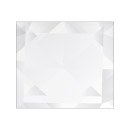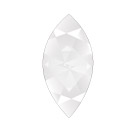Diamond Cuts & Shapes
Introduction -
The shape of a Diamond refers to its physical structure as they are available in assorted shapes starting from classic round shape to a fancy.pear cut diamond. It is important to study and identify the attributes of the different shapes of a diamond to make the right choice before making a purchase. The physical structure or the form adds to the beauty or appearance of the diamond. A diamond is interestingly accessible in beautiful and striking shapes which definitely depends on the skills of the craftsmen. Shaping or cutting a diamond is considered an art as the brilliance and sparkle of the diamond is based on the cut.
Round Shapes -
Most common cut and shapes of a diamond are Round Cut, Oval Shape and Cushion Cut.

Round -
By far the most common and favorite cut of a diamond is Round. It came into existence in the year 1919, when the engineer Marcel Tolkowsky published his thesis “Diamond design”. According to him, the perfect proportions of a round cut diamond for brilliance and fire are a 58 facet cut divided among its crown (top), girdle (widest part) and pavilion (base) . It is estimated that almost 75% of total diamonds sold are actually round cut. Basically, round cut diamonds are costlier than fancy shaped diamonds because the round diamonds are in much demand but the yield is low. Also, it is superior than any other diamond shape because it properly reflects light and brilliance.

Oval -
In the year 1960, Lazare Kaplan created the oval shaped diamonds. More or less like the round diamond but a little elongated at the edges, the oval shaped diamonds reflect the same amount of brilliance and fire with 56 facets. An interesting fact about the oval shaped diamonds is that, it creates an illusion of bigger diamond size and makes the fingers of the wearer appear slender and thin because of its typical structure. Each Oval shaped diamonds have a bow-tie effect that occurs when the light doesn’t bounce back in the center of the diamond because of the typical way the diamond is cut.

Cushion -
Also known as the “Old mine cut”, Cushion cut diamonds first originated in the year 1830. The cushion cut diamond is an amalgamation of square and rounded corners with its 58 facets. This diamond shaped has been favorite for almost 200 years and is quite similar to a square shaped diamond but with much rounded edges.Compared to other diamond shapes cushion cut diamonds are best known for its fire appeal. Sometimes it is also called a pillow-cut diamond, because of its pillow shaped appearance.
Square Shapes
Most popular shapes cut and shapes of a diamond are Princess Cut, Radiant Cut, Emerald Cut and Asscher Cut

Princess -
First created in the year 1980 in the United States, by Betzalel Ambar and Israel Itzkowitz, is one of the most appreciated diamond cut of all times. After the round cut diamond, princess cut diamond is the next cut which has a perfect combination of appearance, shape and price value. Altogether a princess cut diamond has 76 facets with a fiery sparkle and brilliance. One of the valuable qualities of a princess cut diamond is that the existing inclusions are less noticeable due to its unique cutting and polishing technique, thus making it a favorite for engagement rings.

Radiant -
The radiant cut diamond first came into existence in the year 1980, ans is regarded as one of the newest cut in the jewelry business. This cut is a brilliant mix of both the cushion cut and princess cut diamond giving out a distinctive shape with its blunt but trimmed edges . The facets of this cut can go up-to 70 facets. The beautiful radiant cut is the best option for buyers who like the emerald cut shape, but want something with the brilliance of a round. It is considered as the best diamond shape for the uniqueness factor.

Emerald -
Apparently the name, "emerald cut" was developed for cutting emeralds, and not diamonds. Distinguished by its beveled corners and step facets, emerald cut is much transparent than any other shapes, which is because higher standards of clarity is needed. The emerald cut has altogether 58 facets (25 pavilion, 25 crown, and 8 girdle), and eight sides as the four “corners. It was created for showcasing emeralds, which in reality have more inclusions than diamonds, and that makes emeralds more difficult to cut. If an emerald-cut diamond is marked by an inclusion,it will be much more easily to be detected with the naked eye.

Asscher -
In the year 1902, the Asscher brothers of Holland, who were the famous diamond cutters of that era created the asscher cut diamond. Also called a “square emerald cut diamond” this diamond shape is a stepped square cut with cropped corners. The best part of asscher cut diamonds are the corners which makes it quite distinctive compared to other squared shaped diamonds. The pavilion of this diamond is with rectangular facets that emits perfect brilliance and the crown makes flaws which are evident to the naked eye. A finely cut asscher cut diamond has 58 facets.
Fancy Shapes
Most fancy shapes of a diamond are Heart shape, Marquise shape and Pear shape.

Heart -
Heart shaped diamond is regarded as the symbol of love and one of the most romantic and famous shape of all times. In the year 1562, Queen of Scots had sent Queen Elizabeth a gold ring which had a heart shaped diamond and since then this shape came into existence. Since it was assumed as a unique and difficult cut, these diamonds had to be shaped with shaping tools and thus heart shaped diamonds were considered very valuable and artistic. Altogether a heart shaped diamond has 58 facets. It is similar to a pear-cut diamond, differentiated by two rounded edges and a cleft at the top.

Marquise -
In the late 18th century, King Louis XV designed a diamond shape and instructed his artisans to create diamond shape that resembled the lips of his lover Marquise de Popadour. Since, then the cut is called the Marquise cut.This artistic shaped diamond creates a lot of drama and grace with their long and narrow shape. This shape has a brilliant 58 facets and has the widest crown surface compared to any other diamond shapes. Marquise shaped diamonds are widely used for engagement rings and very popular among the masses. The unique shape of this diamond shape creates an illusion of long and slender fingers.

Pear -
The pear shaped diamond also known as the tear shaped diamond was invented in Belguim by a polisher named Lodewyk Van Berquem in the year 1458. One of the amazing features of this diamond shape is that it has no table or culet or edge. It resembles a tear and can be called as half-oval with its pointed edge at one end and circular edge on the other. This diamond shape have 58 facets and are created for maximum brilliance. It is best voted for engagement rings as it creates a slimming effect on the finger.
Accent Stones

Baguette -
The baguette cut diamonds are of two types, straight baguette and tapered baguette. The word "baguette" is a french derivation which means a long loaf of bread. A baguette cut diamond has 14 facets and is used as side stones along with center diamonds in jewelry pieces.

Trillion -
The trillion cut diamonds are actually the triangular shaped diamonds, that has three equal sides and 31 or 50 facets. Trillion cut diamonds are mostly used as side stones to accentuate large solitaire diamonds .
